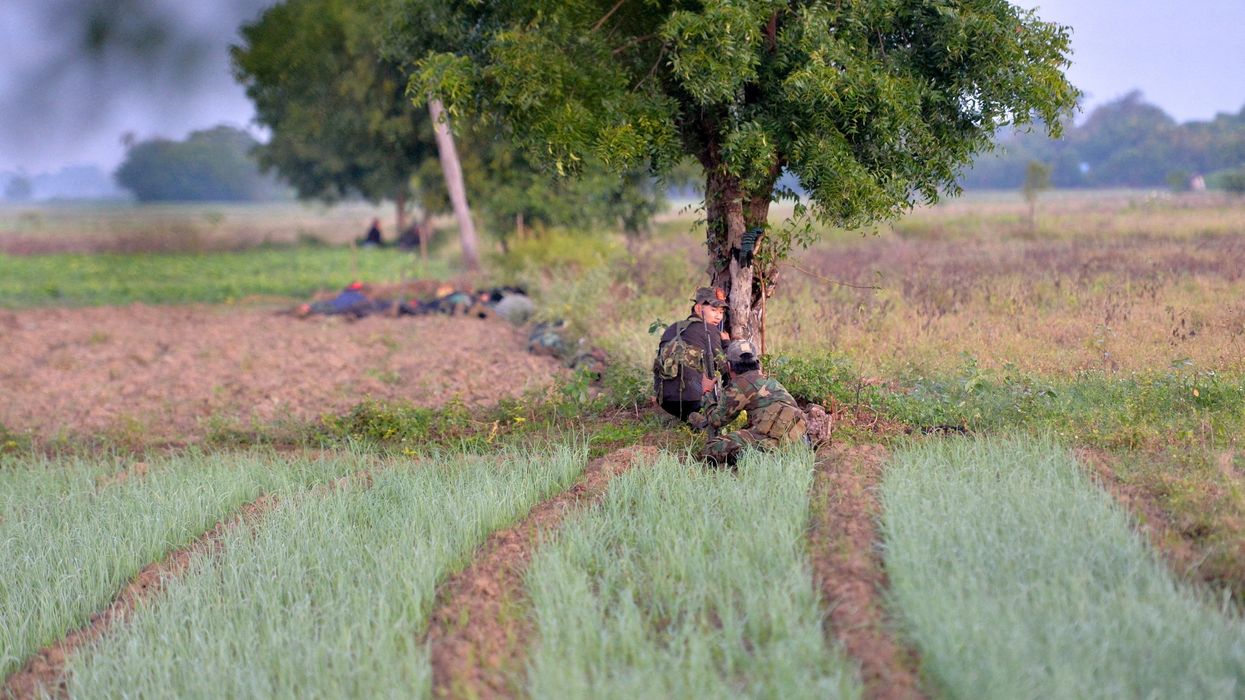At least two people were killed in Bangladesh Monday after mortar shells fired from Myanmar during clashes there landed across the border, as terrified residents reported heavy fighting and medics treated several with gunshot wounds.
Parts of Myanmar near the 270-kilometre (167-mile) border with Bangladesh have seen frequent clashes since November, when rebel Arakan Army (AA) fighters ended a ceasefire that had largely held since a 2021 coup.
Bangladeshi villagers living close to the border said they were fearful of the fighting, with aid agency Doctors Without Borders (MSF) saying they had treated 17 people wounded in the clashes on Sunday following fighting at the Bangladesh-Myanmar border.
"All the patients had gunshot wounds", MSF said Monday. "Two were in life-threatening condition, and five were seriously injured." Local police chief Abdul Mannan said a Bangladeshi woman, named as 48-year-old Hosne Ara, and an unnamed ethnic Rohingya man had been killed Monday afternoon.
"They were sitting in the kitchen... when a mortar hit the place," Ara's daughter-in-law said. "She was serving lunch to the Rohingya man who was hired by the family for farm work when they were hit."
With conditions deteriorating, the United Nations Security Council was to hold a closed-door meeting Monday (5) regarding Myanmar.
Nine countries including three permanent Security Council members -- Britain, France and the United States -- issued a joint statement expressing concern about the "dire" situation in Myanmar, notably 18 million people in need of humanitarian assistance and 2.6 million displaced from their homes.
Britain's UN mission said its envoy will tell the council the countries "strongly condemn the ongoing violence harming civilians, including the military's continued use of indiscriminate air strikes."
Bangladeshi villagers living close to the border said fighting broke out across the frontier last week, with many sending their children away to relatives to escape the conflict. "We are living in fear," said Abdus Shukkur, 75, from Tumbru Bazaar, a Bangladeshi border village. "It's not our war, but they are attacking our homes and people."
Hasina Banu, 50, returned to her home in Tumbru early Monday after four days, only to be caught in fresh clashes. She reported seeing helicopter gunships firing nearby. "I didn't eat anything since last night," Banu said. "We are in constant fear for our life."
Bangladesh Home Minister Asaduzzaman Khan said Sunday that border police officers from neighbouring Myanmar's Rakhine state had "entered our territory for self-protection" ahead of advancing AA fighters.
A spokesman of the Border Guard Bangladesh, the country's frontier forces, told AFP Monday (5) that "at least 95 border officers of Myanmar have crossed the border and taken shelter in Bangladeshi border posts".
A Myanmar junta spokesman could not be reached for comment on the clashes. Myanmar's rebel Three Brotherhood Alliance, of which the AA is a member, said late Sunday that AA fighters were battling Myanmar border guard forces near Bangladesh.
They reported nearly 60 members of the Myanmar security forces had "sneaked into Bangladesh through the border and escaped with weapons".
In October, an alliance including AA insurgents and other ethnic minority fighters launched a joint offensive across northern Myanmar, seizing vital trade hubs on the Chinese border.
Last month, the alliance announced a China-mediated ceasefire, but it does not apply to areas near the Bangladeshi and Indian border, where fighting continues.
Bangladesh is already home to around one million Rohingya refugees, driven out of Myanmar in a military crackdown in 2017.
Britain and eight other countries said in their statement that conditions have "further deteriorated" in Rakhine state, and called for "the voluntary, safe, dignified, and sustainable return of Rohingya refugees and internally displaced persons."













